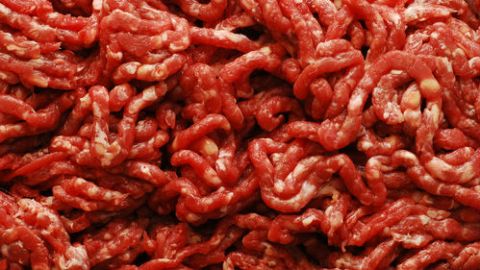How the Sausage is Made: It’s Still a Jungle for Consumers

What’s the Big Idea?
Over the last two weeks, pink slime has become the safe food movement’s equivalent of the Kony 2012 campaign. Over 200,000 people have signed an online petition to ban the use of what the food industry calls “lean beef trimmings” in school lunches. Larger questions have been raised about why it has taken consumer advocates and government watchdogs so long to catch on.
After all, haven’t we seen this movie before?
106 years ago Upton Sinclair blew the whistle on the Chicago stockyards meatpacking industry in his famous muckraking novel The Jungle. I have quoted a representative, nausea-inducing passage from the book below, but here is a quick tease:
These rats were nuisances, and the packers would put poisoned bread out for them; they would die, and then rats, bread, and meat would go into the hoppers together.
These reports shocked an incredulous nation. President Teddy Roosevelt, for instance, initially concluded that Sinclair must be “a crackpot.” Yet subsequent investigation confirmed Sinclair’s reporting (although claims that workers who fell into rendering vats were ground into lard were not officially substantiated). Public outcry led to the Pure Food and Drug Act of 1906 and ultimately the establishment of the Food and Drug Administration in 1930.
And yet, consumer protection requires vigilant oversight, and that is exactly what critics say was lacking during the administration of George H.W. Bush, when low-grade ammonia-treated “lean beef trimmings” previously reserved for pet food were declared safe for human consumption. According to The Daily, health concerns were muted by JoAnn Smith, Undersecretary of the USDA.
Then for the next two decades, apparently, Smith’s successors at the USDA were out to lunch.
What’s the Significance?
Pink slime is everywhere. It’s sold in grocery stores and served in school lunches, meaning most of us have probably consumed it at some point in our lives. The government purchased 7 million pounds of pink slime for school lunches just last year. While the USDA announced it would let schools opt out this week, food administrators and consumers alike have found pink slime to be so ubiquitous that it is nearly impossible to avoid. Some experts estimate it can be found in up to 70 percent of the ground beef sold in grocery stores.
In other words, we know how the sausage is made. We don’t like how it is made, but we don’t know how to avoid it. That is because you will never see packaged meat in the grocery store labeled “pink slime.”
How Can I Avoid Pink Slime In Meat?
Look for meat that is labelled “USDA Organic” and shop at stores such as WholeFoods and Costco that have guaranteed their products don’t contain pink slime. Your other choices are to go vegetarian, or grind your own meat (or watch a butcher do it for you).
In the meantime, if you are looking to give up red meat altogether, this passage from Upton Sinclair’s The Jungle might just have the desired effect:
There was never the least attention paid to what was cut up for sausage; there would come all the way back from Europe old sausage that had been rejected, and that was moldy and white – it would be dosed with borax and glycerine, and dumped into the hoppers, and made over again for home consumption. There would be meat that had tumbled out on the floor, in the dirt and sawdust, where the workers had tramped and spit uncounted billions of consumption germs. There would be meat stored in great piles in rooms; and the water from leaky roofs would drip over it, and thousands of rats would race about on it. It was too dark in these storage places to see well, but a man could run his hand over these piles of meat and sweep off handfuls of the dried dung of rats. These rats were nuisances, and the packers would put poisoned bread out for them; they would die, and then rats, bread, and meat would go into the hoppers together. This is no fairy story and no joke; the meat would be shoveled into carts, and the man who did the shoveling would not trouble to lift out a rat even when he saw one – there were things that went into the sausage in comparison with which a poisoned rat was a tidbit. There was no place for the men to wash their hands before they ate their dinner, and so they made a practice of washing them in the water that was to be ladled into the sausage. There were the butt-ends of smoked meat, and the scraps of corned beef, and all the odds and ends of the waste of the plants, that would be dumped into old barrels in the cellar and left there. Under the system of rigid economy which the packers enforced, there were some jobs that it only paid to do once in a long time, and among these was the cleaning out of the waste barrels. Every spring they did it; and in the barrels would be dirt and rust and old nails and stale water – and cartload after cartload of it would be taken up and dumped into the hoppers with fresh meat, and sent out to the public’s breakfast. Some of it they would make into “smoked” sausage – but as the smoking took time, and was therefore expensive, they would call upon their chemistry department, and preserve it with borax and color it with gelatine to make it brown. All of their sausage came out of the same bowl, but when they came to wrap it they would stamp some of it “special,” and for this they would charge two cents more a pound.
Image courtesy of Shutterstock
Follow Daniel Honan on Twitter @Daniel Honan





